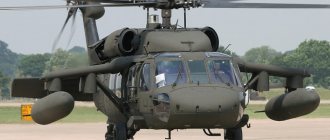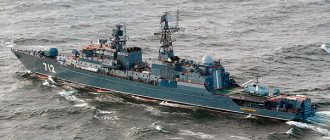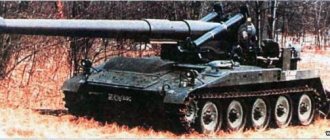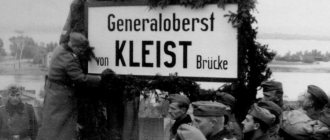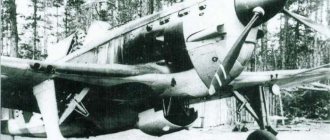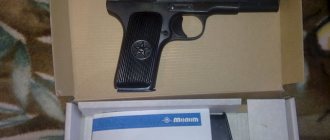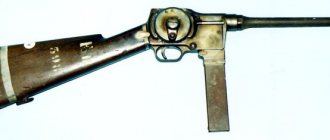| SM.81 | |
| Savoia Marchetti SM.81 of the Aviazione Legionaria in action during the Spanish Civil War (accompanied by Fiat CR.32 fighters) | |
| Role | Bomber and transport aircraft |
| national origin | Italy |
| Manufacturer | Savoia-Marchetti |
| First flight | February 8, 1934 |
| Introduction | 1935 |
| Retired | 1950 |
| Primary users | Regia Aeronautica Spanish Air Force Aeronautica Militare |
| Number of built | 535 [1] |
| Developed from | Savoia-Marchetti S.73 |
The Savoia-Marchetti SM.81 Pipistrello
Pipistrello (Italian: bat) was the first of a three-engined bomber/transport aircraft to serve in the Italian
Regia Aeronautica
.
[2] When it appeared in 1935, it represented a real step forward in Italian military aviation: it was fast, well-armed and had a long range. [2] It proved effective during the Ethiopian War and the Spanish Civil War. [2] Although too slow to remain competitive as a bomber in the final years of World War II, it was one of the most flexible, reliable and important aircraft of the Regia Aeronautica
from 1935 to 1944, adapted for secondary missions in a wide range of tasks.
Design and development [edit]
The SM.81 was a militarized version of Savoia-Marchetti's earlier SM.73 airliner, having cantilever wings, three engines and a fixed landing gear. This version arose from the pursuit of the interests of Italo Balbo, a brilliant representative of the Fascist regime (but nevertheless "exiled" to Libya by Mussolini), who required a fast and efficient aircraft capable of serving the vast Italian colonies. in Africa.
The SM.81 had wings that were roughly similar to the twin fuselage of the S.55 and identical to those of the S.73, but had a much simpler fuselage. Approximately six months after the SM.73 first appeared, the SM.81 prototype ( MM.20099
listen)) first flew from Vergate, near Varese, on 8 February 1934, flown by test pilot Adriano Bacula.
[3] The first series
, ordered in 1935, was designed for 100 aircraft and was quickly put into production as a result of the international crisis and embargo caused by the Ethiopian War. The first examples were sent to 7 Wing at the Campo della Promessa airbase near Lonate Pozzolo.
Although it was quickly supplanted as a front-line bomber, the SM.81 continued to serve as a transport vehicle thanks to its wide fuselage, which allowed it to carry a wide range of weapons. Besides speed, it was generally superior to the SM.79 Sparviero
as a multi-role aircraft.
[ citation needed
]
General characteristics [edit]
The SM.81 was a rugged three-engine monoplane with fixed tailwheel undercarriage, with the main wheels encased in large spars to reduce drag, and had a crew of six. [4] The aircraft was of mixed construction: the fuselage had a frame made of steel pipes with a metal rear section, and the rest was covered with wood and fabric. It had a relatively large fuselage, an unnecessary characteristic for a bomber that determined its future as a transport aircraft. Because the engines were quite small, the fuselage did not fit well with the nose engine, even worse than the SM.79. There were many windows to bring daylight into the fuselage, giving the impression that it was a passenger aircraft.
The all-wood wing had three spars to provide the necessary support, while the semi-elliptical tail surfaces were covered with a fabric of metal. The pilot and co-pilot sat side by side in an enclosed cockpit, with separate quarters for the flight engineer and radio operator/gunner behind the cockpit. [5] The bomb bay was located behind the cockpit along with a passage that connected the middle and rear fuselage, where three more defensive positions were located.
The Bombardier's position was located just below the cockpit, in a semi-retractable gondola, [5] and differed from that of the SM.79, being both larger and in a location that was more conducive to communication with the crew, and providing excellent visibility thanks to the glazed panel. Both this position and the flight deck had escape hatches, but for normal entry and exit there was a door on the left, in the middle of the fuselage, and one at the rear of the fuselage. Equipment included an RA 350I radio transmitter, an AR5 radio receiver, and a P63N radio compass (not always installed), while other systems included an electrical generator, a fire suppression system, and an OMI 30 camera (in the gunner's nacelle). [ citation needed
]
The aircraft, with its large wing and rugged undercarriage, was reliable, enjoyable to fly and could operate on any terrain. It was surprisingly fast for its time and given the power of its engines, especially compared to the similar Junkers Ju 52. It was better armed than the SM.79, but the increased drag combined with the same engine power reduced top speed and cruising speed, as well as range. No armor was fitted except for self-sealing fuel tanks.
Weapons [edit]
The SM.81 was equipped with six machine guns, which provided heavy defensive armament for the 1935 aircraft. Two electric retractable turrets, one on the dorsum (just behind the pilots' seats) and one on the stern, were equipped with 7.7 mm (0.303 in) Breda-SAFAT machine guns, while single 7.7 mm (0.303 in) Lewis guns were installed to fire through the side hatches. [5] The turrets rotated using the Riva-Calzoni hydraulic system, while the guns were raised manually, with manual backup mechanisms provided for both the retractable and rotating systems. When retracted, only the top of the turret was visible; the gun barrels were positioned vertically, one behind the other, to reduce drag, giving the appearance that the aircraft had additional antennas. Given the SM.81's cruising speed of around 270 km/h (170 mph) and the presence of a massive fixed undercarriage, the aerodynamic gain was relatively small.
The ventral turret was used differently than on other aircraft, where the gunner occupied a ball- or trash-can-shaped structure; instead, due to lack of space, the gunner pressed himself against the fuselage with his head down inside the turret. This did not prove to be very effective, as were most ventral turrets [ citation needed
], and they were not fitted for further Savoias, although Piaggio installed a dumpster style turret which housed the gunner on their P.108.
Both flanks were covered by one single and one twin artillery installation. Six 7.7 mm (0.303 in) Vickers machine guns were initially fitted, but these were later replaced by reliable, although not very fast-firing, Breda-made models, along with 500 rounds of ammunition per barrel.
The SM.81 bomb bay was divided into two parts with a passage connecting the aft and mid fuselage, and could accommodate a wide range of ammunition weighing up to 2,000 kg (4,410 lb) at short ranges, with individual bombs weighing up to 500 kg (1,100 lb) at horizontal or vertical position: [5]
- 4 × 500 kg (1,100 lb) (horizontal)
- 4 × 250 kg (550 lb) (same)
- 16 × 100 kg (220 lb) (stored vertically like all smaller ones), true weight about 130 kg (287 lb)
- 28 × 50 kg (110 lb) (true weight, approximately 70 kg / 150 lb)
- 56 × 31 kg (68 lb), 24 kg (53 lb), 20 kg (40 lb) or 15 kg (33 lb)
- 1,008 × 2 kg (4 lb) (true weight, approximately 1,700 kg / 3,750 lb)
- Incendiary bombs
The bomb release mechanism was located to the right of the bombardier's position.
The SM.81's defensive armament was better than that of its successor, the SM.79, and even than that of the SM.84, although of a smaller caliber, it was still insufficient when faced with modern enemy fighters. It could also carry a larger bomb load than the SM.79 due to its wide fuselage.
Propulsion system[edit]
Main article: Savoia-Marchetti SM.81 propulsion system
The SM.81 had a three-engine configuration, but, unlike the Sparviero
, throughout its production was equipped with a wide range of engines:
- Alfa Romeo 125 RC.35, 432–507 kW (580–680 hp). 192 built. [3]
- Gnome-Rhône 14K, 485–746 kW (650–1000 hp). 96 built. [3]
- Piaggio PX RC15, 501–522 kW (670–700 hp) - 48 pieces. [3]
- Piaggio P.IX RC40, 507 kW (680 hp) - 140 units. [3]
- Alfa Romeo 126 RC.34, 582–671 kW (780–900 hp), also fitted to early versions of the SM.79. 58 built. [3]
In addition, one aircraft, the SM.81B, was built in a twin-engine configuration, powered by two 627 kW (840 hp) Isotta-Fraschini Asso XI inline engines and a streamlined glass nose. It had inferior performance compared to the three-motor versions and was not further developed. [6]
Combat aircraft. Humpback hawk as a symbol
Well, yes, here we have a real symbol of the Royal Air Force and at the same time the most popular Italian bomber of the Second World War.
A very unique creation by Alessandro Marchetti, released in a very decent (for Italy) circulation of almost one and a half thousand units (1458 to be exact). The Italian station wagon was used as a bomber, torpedo bomber, reconnaissance aircraft and transport aircraft. For its time, it was very good in terms of flight characteristics; before the start of World War II, it repeatedly participated in air races and (not least!) won them! Well, the SM.79 has several world records for speed and load-carrying capacity.
In general, he was still a “Hawk”. In the mid-30s of the last century. But in the Royal Italian Air Force the aircraft was named “hunchback”. So - "Humpback Hawk".
The three-engine design in those days was not something so outstanding, but also not very common. Dutch Fokker F.VII/3m, German Junkers Ju52/3m, Soviet ANT-9 and SM.79. There were three-engine developments in other countries, but somehow they did not take root. Preference was given to two and four-engine layouts.
Yes, three engines provided some advantage over two in terms of reliability and range, but by the forties, due to an increase in the power characteristics of aircraft engines, three-engine aircraft began to disappear from the fleets of all countries.
Only in Italy did three-engine bombers remain in combat service until the very end of the war. True, this was due not so much to the outstanding characteristics of the aircraft as to the state of finances in fascist Italy.
The SM.79, like many combat aircraft that came to prominence during World War II, had entirely civilian roots. In 1933, Marchetti conceived the idea of creating a high-speed passenger aircraft that could take part in the international races planned in 1934 on the London-Melbourne route.
The platform used was the SM.73, also a three-engine aircraft, which was also produced in the military modification SM.81.
In this project, he clearly built on his previous machine, also three-engine: the S.73 (military version - S.81), built in 1934 using many similar design solutions. The fuselage frame is steel pipes covered with duralumin sheet, plywood and canvas, a cantilever wooden wing, almost identical tail.
The place where all ideas were united was Societa Idrovolanti Alta Italia - SIAI, better known under its brand name "Savoia".
In general, SIAI was actively involved in the production of flying boats and was known throughout the world in this regard. The Savoy flying boats S.16 and S.62 were in service with the Soviet Air Force, and the large S.55 were operated on Far Eastern airlines even during the Great Patriotic War.
An experimental aircraft with the civilian designation I-MAGO made its first flight on October 8, 1934. True, the races are long over, and the winner was the English De Havilland DH.88 “Comet.”
But the plane produced by Marchetti and Savoy was more than successful. However, it was necessary to immediately install other engines; the Alfa Romeo 125RC35 with a power of 680 hp was used. pp., licensed "Bristol Pegasus". And with them the plane reached a speed of 355 km/h, and later - 410 km/h. As a result, the SM.79 became the fastest multi-engine aircraft in Italy, ahead of the S.81 bomber that began to enter service.
In 1934, a competition was announced for a new medium twin-engine bomber for the Italian Air Force. The competition requirements stipulated that the bomber must be twin-engine.
Eight projects were submitted to the competition. The SIAI company offered its S.79B aircraft. The project did not go through because it was a rough conversion of the passenger S.79P into a bomber with two French Gnome-Rhone K14 engines. Plus, the commission did not like the placement of machine guns and bomb bays.
However, the company was ordered 24 aircraft. In principle, there were reasons for such a step; the design of the SM.79 was quite simple in technological terms and really made it possible to quickly launch mass production of aircraft if necessary. It made sense to test the aircraft in a pre-production batch, because Italy was preparing for war. It wasn’t quite clear yet which one, but I was preparing.
The first SM.79 was equipped with bomb racks and a test cycle was carried out on it. The tests were successful. The wide and not very aerodynamically sleek fuselage of the passenger car was preserved, but the same hump with machine guns appeared above the pilot’s cabin. One stationary "Breda-SAFAT" with a caliber of 12.7 mm looked forward, and the shooter had the same, but movable machine gun to defend the rear hemisphere.
Another large-caliber machine gun was installed in the rear fuselage, in the gondola, for firing backwards and downwards. And there was a 7.69 mm Lewis machine gun, it was mounted above the gondola inside the fuselage on a special installation. The machine gun could be thrown from side to side and fired from it through large rectangular hatches on the left and right sides. The very dubious frontal armament is entirely on the conscience of Marchetti. The designer considered that since the plane was fast, it would be unlikely to be attacked head-on often. This means that one machine gun over the pilot’s head is enough for his eyes. It's a strange approach, but that's how it happened.
The bomb bay was designed in a very original way. It was located in the central part of the fuselage and seemed to be shifted to the right of the aircraft axis. This was done in order to maintain passage to the tail section.
The bomb bay could be loaded with up to 1250 kg of bombs in different combinations (2 x 500 kg, 5 x 250 kg, 12 x 100 kg or 12 cassettes with small fragmentation bombs of 12 kg each). All bombs were suspended vertically, except for the 500 kg bombs, which were installed obliquely.
The crew consisted of four people: two pilots (the co-pilot was also a bombardier), a flight mechanic and a radio operator. The bombardier was usually located in the very nose and had to have the best view. But in our case there was a second motor. Therefore, in the SM.79, the bombardier was placed in a gondola made under the fuselage in the rear section. The front wall of the gondola was transparent, which, in general, provided working visibility. That's why the passage to the tail section was needed.
From his gondola, the bombardier could not only aim, but also turn the aircraft using the steering wheel to control the rudder during bombing.
The first production SM.79 bombers appeared in October 1936. And by January of the following year, the company fulfilled the same order for 24 vehicles. On production aircraft, the “hump” lengthened, teardrop-shaped protrusions appeared on its sides, and the glazing on top disappeared. The WWI Lewis was replaced by a more modern SAFAT of the same caliber.
Officially, the bomber was put into service under the name SM.79 Sparviero - “Hawk”, but this name did not catch on, and in units it was simply called “gobbo” - “hunchback”.
Starting from the 2nd series, the “hump” was shortened (previously it reached almost to the front door), the teardrop-shaped protrusions were removed from it, but additional windows were made for the radio operator and flight mechanic.
The bombardier's nacelle was slightly deepened, the engine exhaust pipes were bent (away from the engine nacelles), and additional stabilizer braces were introduced. In this guise, almost unchanged, the SM.79 was in mass production for seven years.
Seven years – this is not about any particularly outstanding characteristics of the aircraft. There were simply no competitors. All the planes that were offered by the same Fiat or Caproni simply turned out to be much worse.
Meanwhile, in 1937, an expansion plan for the Italian Air Force was adopted, according to which in 1939 it was planned to have about 3,000 bombers. Mussolini's plans were more than gigantic, but the practice turned out to be somewhat different. Italy was simply unable to produce so many aircraft in two years, and plus the planes participating in the plan (Fiat BR.20, Caproni Sa.135, Piaggio R.32) stubbornly refused to enter the required condition .
So the bet was quite justified on the SIAI three-engine. And pilots began to be transferred to training from fighters; this was required by the really high speed of the bomber and fairly easy control.
Yes, made on the basis of a passenger aircraft, the SM.79 had many shortcomings caused precisely by the alteration: inconvenient placement of the bombardier, a small bomb bay with a rather large fuselage, defensive weapons in the side hatches. All this caused quite reasonable criticism. But nevertheless, there was nothing to choose from.
Meanwhile, the civil war in Spain began, and the opportunity arose to test bombers in combat conditions. Both Italian pilots, whom Mussolini “lent” to Franco, and the Spaniards fought on the SM.79.
SM.79 with Italian crews operated near Seville, Bilbao, and took part in the battles of Brunete and Teruel. In May 1937, five Italian bombers damaged the Republican battleship Jaime I in the port of Almeria.
It turned out that the speed of the SM.79 allowed them to fly during the day without escort. Of all the Republican fighters, only the I-16, of which there were not many, could catch up with the Hawk. And the car turned out to be very durable. Of the nearly hundred bombers delivered, 16 were actually lost: the Spaniards lost 4 aircraft, the Italians 12.
In general, the SM.79 was used more than successfully. From the Spaniards he received the nickname “Horobado”, that is, “hunchback”.
The generous Italians handed over the remaining 61 “hunchbacks” to the Spaniards. They survived the Second World War in the Spanish Air Force, and the last of them flew in the Spanish North African colonies of Ifni and Rio de Oro until the early 60s.
While combat SM.79s were dropping bombs on Spanish soil, their counterparts in Italy were carrying out propaganda missions, participating in flights and setting records. It was necessary to show the whole world the achievements of the fascist regime of Mussolini, so in reality the SM.79 took part in many flights. On the flight Marseille - Damascus - Paris SM.79 took three first places. Italians also took part in the flight Rome - Dakar - Rio de Janeiro. One of the pilots was Mussolini Jr.
In addition, the SM.79 with P.11 engines from Piaggio set a series of world speed records in the category of aircraft with a payload of 500, 1000 and 2000 kg.
In general, in the pre-war period, SIAI, by that time already renamed Savoia-Marchetti, very aggressively broke into export markets. Marchetti believed that a twin-engine aircraft would still be better suited for export. And he even created a prototype of the SM.79B (“Bimotore”).
Therefore, despite the rejection by the Ministry of Aeronautics of the S.79B (“Bimotore”) project, he continued work in this direction, bringing the project to the construction of a prototype.
Meanwhile, the three-engine SM.79 became the main striking force of the Italian Air Force. And with them Italy entered the Second World War. In addition to the combat experience gained in Spain, these aircraft were used for landing troops during the capture of Albania in 1939, as well as in the attack on Greece.
Immediately after Italy declared war on England and France, Italian bombers attacked their assigned targets. Taking off from airfields in Sicily, the Italians bombed Malta. Airplanes based in Libya attacked French bases in Tunisia. From Italy we flew to Corsica and Marseille, from Ethiopia to Aden.
In North Africa in September 1940, four S.79 regiments assisted the Italian offensive on Egypt. At first they even tried to use them as attack aircraft to support troops on the battlefield and hunt for British tanks and armored cars. It didn’t work out; the British anti-aircraft gunners very quickly disappointed the Italians.
But the aircraft, despite heavy losses both in combat and technical terms, fought through the entire African campaign until the defeat of the Axis countries.
The campaign showed many of the weaknesses of the SM.79. Primitive turrets limiting the firing sectors, low rate of fire of heavy machine guns and their unreliability, weak armor and lack of protected gas tanks. It turned out that parades and real combat use are still two different things.
There were difficulties with repairs in the field, as a result of which the Allies ended up with more than 30 aircraft in varying states of disrepair. It was especially difficult with a one-piece wing.
In addition, in 1941 a new generation of faster fighters began to appear in the air, and the speed of the SM.79 was no longer as protective as before. And by mid-1941, the number of Hawks in the Italian Air Force began to decrease. Moreover, a more advanced (and also three-engine) Kant Z.1007 bomber arrived.
And the “Hawks” were firmly established in naval aviation, where they fought until the very end of the war.
On July 8, 1940, SM.79 attacked the cruiser Gloucester and damaged it. This was the first success of the Hawks; the Italians did not achieve direct hits, but the ship was well battered by close explosions.
Torpedo bombers based on SM.79 celebrated success on the night of September 18, 1940, when two SM.79 torpedoes hit the cruiser Kent. The crew defended the ship, but the cruiser was dragged to Gibraltar, where it remained for almost a year under repair.
The list of successful attacks by SM.79 torpedo bombers was supplemented by the cruisers Liverpool, Glasgow, Phoebus, and Arethusa, which were damaged as a result of the actions of the SM.79 crews. But for the destroyer Quentin it all ended sadly; on December 2, 1942, it sank after meeting with torpedo bombers.
In 1943, the aircraft carrier Indomitable (not fatally) and a number of transport ships from the Maltese convoys received torpedoes. The destroyer Janus was sunk by an air torpedo. On September 8, 1943, Italy capitulated and split in half: a puppet Italian Social Republic was created in the north under German control, and the British and Americans occupied the south. There were still a significant number of SM.79s left at the airfields, which the Allies converted into transport ones. There were enough vehicles for an entire regiment (3rd Transport Aviation Regiment), equipped with the SM.79.
So the “Hawks” began not only to carry cargo and passengers, but also to scatter leaflets, drop paratroopers and cargo behind the front line. And after the complete end of the war, all SM.79s became transport aircraft.
By 1950, almost all of the Hawks had exhausted their service life. The aircraft that Lebanon acquired for its needs in 1949 set the record for longest service life. These machines served until 1960. One of the Lebanese SM.79s is now in the Italian Museum of Aviation History.
More S.79s were produced than all other Italian multi-engine bombers combined. We can say that the “Humpback Hawk” became the face of Italian strike aviation, having fought on almost all fronts. Even on the Eastern Front, near Stalingrad, where Romanian air units armed with these aircraft fought.
But by 1941, this vehicle was so outdated that it had virtually no combat value. It's not Marchetti's fault, it's progress's. Which Italy could not keep up with all its desire.
LTX SM.79
Wing span, m: 21.80 Length, m: 15.60 Height, m: 4.10 Wing area, m2: 61.00
Weight, kg - empty aircraft: 6,800 - normal take-off: 10,500
Engine: 3 x Alfa Romeo 126 RC34 x 750 hp Maximum speed, km/h - at the ground: 359 - at altitude: 430 Cruising speed, km/h: 360
Practical range, km: 2,000 Maximum rate of climb, m/min: 335 Practical ceiling, m: 7,000 Crew, people: 4-5 Armament: - one Breda-SAFAT 12.7 mm machine gun; — two Breda-SAFAT 12.7 mm machine guns for protection from the tail; — one Breda-SAFAT 7.7 mm machine gun for side defense.
Bomb load: 2 x 500 kg bombs, or 5 x 250 kg bombs or 12 x 100 kg bombs.
Fuel[edit]
The fuel tanks, which were standard on Italian multi-engine aircraft, were metal self-sealing fuel tanks using materials developed by specialist manufacturer SEMAPE. Eight tanks were installed, six of which were located in the center wing (4 x 150 L/40 US gal and 2 x 1,140 L/301 US gal) and two 370 L (100 US gal) tanks (or 780 L/210 US gallons with Gnome-Rhône 14K engines) in outer wings [ citation needed
] . This gave a total fuel capacity of 3,620 or 4,400 L (960 or 1,160 US gal).
Modifications of the SM.79 bomber
- SM.79-I "Sparviero" - a bomber with Alfa Romeo 126 RC.34 engines, the presence of a shooting point above the cockpit and a ventral bombardier gondola, and the absence of windows on the sides of the fuselage. First flight September 2, 1935. Serially produced since 1936. Exported to Yugoslavia (45 aircraft).
- SM.79-II is a torpedo bomber, with souped-up 14-cylinder Piaggio P.XI RC.40 engines and sighting equipment. Could carry 2 torpedoes under the fuselage. Produced in 1941-1942.
- SM.79-III (S.579) - modernized, with Alfa Romeo 128 RC.18 engines, the absence of a lower nacelle, new propeller spinners, extended exhaust pipes and a 20 mm cannon, firing forward. Developed in 1943 under the supervision of German specialists. Produced in 1943-1944.
- SM.79B - export twin-engine, with a glazed forward fuselage and 18-cylinder FIAT A.80 RC.41 engines (on the Romanian Gnom-Rhone K.14 “Mistral Major”). Delivered to Brazil (3 aircraft), Iraq (4) and Romania (24).
SM.79 in the air
- SM.79C - racing, without weapons and with Piaggio P.XI RC.40 "Stella" engines. In 1937, 5 aircraft were converted.
- SM.79JR - export for Romania, with 2 V-twin liquid-cooled Jumo.211Da engines. 24 aircraft were produced. Produced under license in Romania at the IAR factories.
- SM.79P is a civil aircraft with a cabin for 8 passengers and Piaggio Stella (later Alfa Romeo 125 RC.35) engines. Designed for MacRobertson Cup racing. Built in 1934. First flight October 8, 1934. Several international speed records have been set.
- SM.79T - transatlantic, unarmed and with increased fuel capacity. 11 aircraft were manufactured.
- SM.83 - passenger for 10 passengers. Produced in a small series in 1937.
History of operations[edit]
Main article: Operational history of the Savoia-Marchetti SM.81
Savoia-Marchetti SM 81
The SM.81 first saw combat during the Second Italo-Abyssinian War, where it proved to be a versatile bomber, transport aircraft and reconnaissance aircraft. SM.81s also saw action in the Spanish Civil War with the Aviazione Legionaria
and were among the first aircraft sent by the Fascist powers to assist Francisco Franco.
Despite their obsolescence, by 1940, when Italy was involved in the Second World War, in service with the Regia Aeronautica
there were over 300 (290–304 depending on the source) SM.81. The first Italian aircraft to enter combat in East Africa were the SM.81. On 11 June 1940, one of them attacked Port Sudan and the other made a reconnaissance flight over the Red Sea. That same night, three SM.81s took off to bomb Aden, but one turned back and one of the two crashed into a hill near Massawa while attempting to land. [7] Another flight was simultaneously deployed against Anglo-Rhodesian defensive positions in British Somaliland just before the decisive Battle of Tug Argan, suggesting a limited role for the tactical bomber. [8]
Its low speed and vulnerability to fighter aircraft meant that during daylight hours the SM.81 was limited to secondary duties, finding use as a transport vehicle. It was an effective bomber at night, especially in the North African theater of operations. Anti-ship actions were also carried out, but without much success.
Most SM.81s were withdrawn by the time of the Italian Armistice in 1943, although a few remained in service with both the Italian Social Republic and the Italian Air Force.
Several examples survived the war and continued to serve in the Aeronautica Militare Italiana
, but by 1950 they were all written off.
SM.81s serving in Ethiopia were given the "Avorii White" markings to distinguish them on SAR missions. The usual camouflage was yellow-green and brown mimetic. The solid dark olive green scheme was introduced later when aircraft were used only in transport missions.
History of the creation of the SM.79 bomber
The future high-speed bomber SM.79 was created by the Italian (Savoia-Marchetti) in 1934 under the leadership of A. Marchetti, almost simultaneously with the SM.81 bomber. If the SM.81 was designed as a passenger aircraft, then the SM.79, on the contrary, was created as a passenger aircraft.
However, its good speed performance predicted its future fate - already in 1935 a military version appeared, just like the Soviet “SB”, called a high-speed bomber. The civilian version of the SM.79 took to the skies on October 8, 1934, and the military version on September 2, 1935.
Serial production of the bomber began in 1936 and continued until 1944, during which time a total of 1330 SM.79 of all modifications were built, ensuring the bomber the title of the most popular Italian military aircraft of the late 1930s and early 1940s.
Drawing of the SM.79 bomber
“Sparviero” translates as “hawk,” but the SM.79’s distinctive appearance earned it the nickname “Gobbo Maledetto,” or “Humpback.” This did not affect the fact that this machine set 26 records and won a number of air races.
Exported to Brazil, Iraq, Spain and Yugoslavia, produced under license in Romania.
Operators[edit]
republic of china
- The Chinese Nationalist Air Force received three aircraft, all of which were lost during training in February 1938 at Yichang.
Kingdom of Italy
- Regia Aeronautica
- Airplane Aviazione Legionaria 64 [9]
- Italian Air Force
Italian Social Republic
- Aeronautica Nazionale Repubblicana
Italy
- Aeronautica Militare Italiana
operated the type in the post-war period.
Spanish state
- Spanish Air Force
Technical specifications (Savoia-Marchetti SM.81b with Alfa Romeo 125 RC35 engines)[edit]
Data from
[
link needed
]
General characteristics
- Crew:
6 people - Length:
18.3 m (60 ft 0 in) - Wingspan:
24 m (78 ft 9 in) - Height:
4.3 m (14 ft 1 in) - Wing area:
92.2 m2 (992 sq ft) - Empty weight:
6,800 kg (14,991 lb) - Gross weight:
9,300 kg (20,503 lb) - Maximum takeoff weight: 10,505
kg (23,160 lb) - Powerplant:
3 x Alfa Romeo 125 RC35 9-cylinder air-cooled radial piston engines, 485 kW (650 hp) each - Alternative engines: - Piaggio PX RC15, Alfa Romeo 126 RC34 or Gnome-Rhône 14K
- Propellers:
3-bladed propellers.
Play
- Top speed:
340 km/h (210 mph, 180 kn) at 4,000 m (13,123 ft) - Cruise speed:
260 km/h (160 mph, 140 kn) - Minimum speed:
110 km/h (68 mph; 59 kn) - Range:
1,500 km (930 mi, 810 mi) - Combat range:
430 km (270 mi, 230 mi) with 2,000 kg (4,409 lb) bomb load - Ferry range:
2000 km (1200 mi, 1100 mi) - Service ceiling:
7,000 m (23,000 ft) - Time to altitude:
- 1000 m (3281 ft) in 4 min 15 s
- 3,000 m (9,843 ft) in 11 min 48 s
- 5,000 m (16,404 ft) in 20 min. 36 s
- Wing load:
101 kg/m2 (21 lb/sq ft)
Armament
- Guns:
6 × 7.7 mm (0.303 in) Breda-SAFAT machine guns - Bombs:
up to 2,000 kg (4,409 lb) bombs
SM.79 bomber design
The Italian SM.79 bomber is built according to the aerodynamic design of a cantilever low-wing aircraft of mixed design, with an integral all-wood wing.
The fuselage was of a truss type, made of steel pipes, its skin in the front part was metal and plywood, in the rear part there was plywood and linen.
For the first time in Italian aircraft construction, the landing gear is retractable, tricycle, with a tail wheel.
The power plant consisted of 3 piston 9-cylinder air-cooled radial engines Alfa Romeo 126 RC.34 (135 RC.32) with three-bladed variable-pitch propellers. The engines were covered with NASA cowlings. The front engine was separated from the cockpit by a fire partition.
The bomb load was placed vertically inside the fuselage, or (for 500 kg bombs) - obliquely. Defensive armament consisted of 2 x 12.7 mm Breda-SAFAT machine guns (one on top, one below at the bombardier), firing backwards, and 1 x 7.7 mm Lewis machine gun, firing through the side windows. The forward-facing 12.7 mm machine gun in the upper “hump” could be used both as an offensive and defensive weapon.
Notes[edit]
- ↑
Savoia-Marchetti SM.81 Pipistrello - ^ abc Angelucci and Matricardi 1978, p. 188.
- ^ B s d e e Passingham 1977, p.182.
- Passingham 1977, pp.182-183.
- ^ a b c d Passingham 1977, p.183.
- Passingham 1977, p.187.
- Sutherland 2009, p. 31.
- Jump up
↑ Playfair 1954, p. 176. - THOMAS, Hugh. Civil War in Spain.
Penguin books. 2006. London. p.938
Bibliography[edit]
- Angelucci, Enzo and Paolo Matricardi. World Aircraft: World War II, Volume I
(Sampson Low Guides). Maidenhead, UK: Sampson Low, 1978. ISBN 0-562-00096-8. - Apostolo, Giorgio. Savoia Marchetti SM81 (aircraft in profile no. 146)
. Leatherhead, Surrey, UK: Profile Publications Ltd., 1967. - Lembo, Daniele, SIAI 81 Pipistrello
, Aerei nella Storia, n.33. - Passingham, Malcolm. "Savoia-Marchetti SM81". Aircraft Illustrated
, May 1977, Vol. 10, No. 5. pp. 182–187. - Monday, David. Hamlyn's Concise Guide to World War II Axis Aircraft
. Chancellor Press, 2002. - Playfair, ISO Major General; and others. (1954). Butler, J. R. M. (ed.). Mediterranean and Middle East: Early successes against Italy (until May 1941). History of the Second World War, United Kingdom Military Series. I
. London: HMSO. OCLC 494123451. Retrieved September 3, 2015. - Sutherland, John and Diane Canwell: The East African Air War 1940–41 RAF vs. Italian Air Force
. Barnsley (South Yorkshire) Aviation of Pen and Sword, 2009. ISBN 978-1-84415-816-4.
